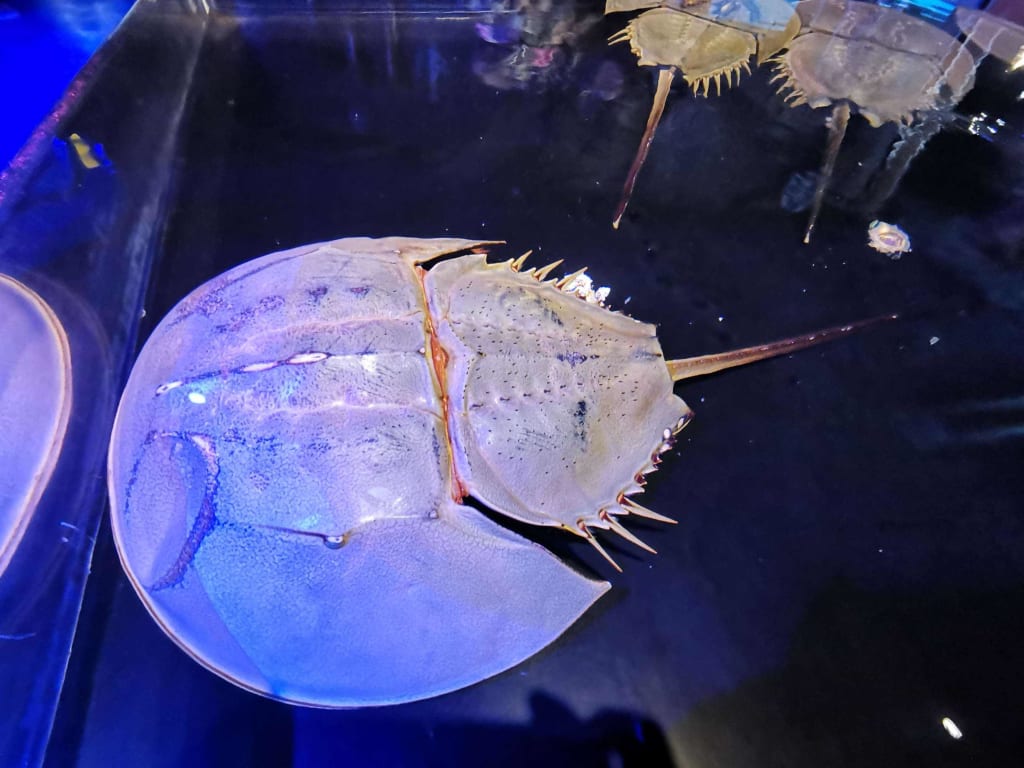The Marine Pharmacist
The ocean is huge and mysterious

Scientists are fascinated by deep-sea animals such as the blood of horseshoe crabs, the visual system of rays, and the toxins of taro snails, which have strange medicinal properties for treating certain human diseases. Let's take a look at the latest developments in this field.
On American beaches facing the North Atlantic, they can be seen emerging from the sea on the night of the full moon at high tide in late spring -- thousands of creatures with a long history that still look exactly like their primitive ancestors 250 million years ago. This is a species of crab called Limulus Polyphemus which imprinted these plants. Horseshoe crabs, also known as horseshoe crabs, are pterostoma Xiapodidae hatchback arthropods, a total of 4 species. One of the best known is the American horseshoe crab. The earliest limulus limulus fossils were found in the Ordovician period (505 million to 438 million years ago), and limulus limulus fossils resembling modern limulus appeared in the Jurassic period (208 million to 144 million years ago). In appearance and body it was like the black smooth helmet worn by miners. Once they come to the surface, they crawl slowly and clumsily toward the shore, where they mate by the bright moonlight.
But for most, this mating will be delayed. Waiting for them are scientists at the Woods Hole Oceanographic Institution outside Massachusetts, where they will send hundreds of horseshoe crabs they catch to the laboratory. Within weeks, the creature's dish could be used to curb deadly infections in humans.
In fact, this unique use of limulus blood is based on its ability to turn blue in the presence of oxygen and its ability to instantly react and coagulate when encountering any type of bacteria that are also harmful to imprinting.
As Norman Wainwright, a cell biologist who has been associated with horseshocyte crabs for years, explained, reagents made from a few drops of "prehistoric blood" are widely used around the world, It monitors medical substances and devices entering the body, such as injections, needles and artificial hearts, for disease-causing bacteria.
This "American Limulus lysate" (LAL) is sensitive, rapid and economical. It can only be made here, because the confluence of ocean currents makes the American coast of the North Atlantic the only coast in the world where this horseshoe crab emerges from the water.
It should be noted that bloodletting does not pose any special harm to these innocent animals. 90% of horseshoes can survive after their blood is drawn and are released into the ocean.
Blue blood that absorbs toxins
The limulus crab is ugly, but it does not affect its value, in the medical aspect it will bring other benefits. Limulus blood contains a substance called serum protein (which combines with oxygen to turn blood blue) that scientists are studying because it has been shown in test tubes to curb the spread of HIV. Other proteins from limulus blood have shown efficacy in treating bacterial infections in laboratory animals, but this is only one of the rich therapeutic resources available from Marine animals. Scientists at the U.S. Marine Biological Laboratory are systematically exploiting this resource, and it looks promising.






Comments
There are no comments for this story
Be the first to respond and start the conversation.